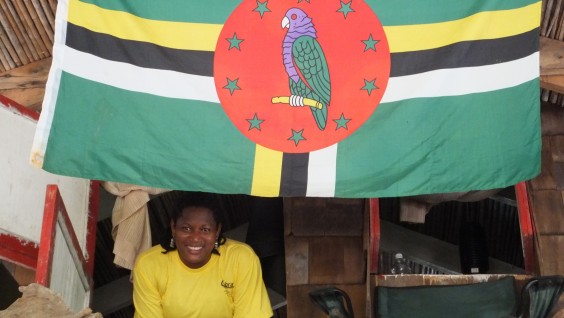
A recent trip to Dominica brought home some old lessons in sustainable landscapes that I would like to share with you today.
Dominica is not Dominican Republic, but rather a small island off the coast of Venezuela. The island is only about 15 miles by 30 miles in size but it takes two hours to drive across the short distance. With only about 3500 vehicles and 70,000 people; things are done differently.
If you want to mail something from here to Dominica expect it to take 3 months and go to the Dominican Republic first. Roads are very narrow and challenging to drive on. Even though the island grows a lot of crops, I didn’t see a tractor for the first week there. Super friendly people and a clean, lush environment even though the land has been abused repeatedly for hundreds of years.
Lesson #1: Don’t let something like this be the most interesting thing in your landscape
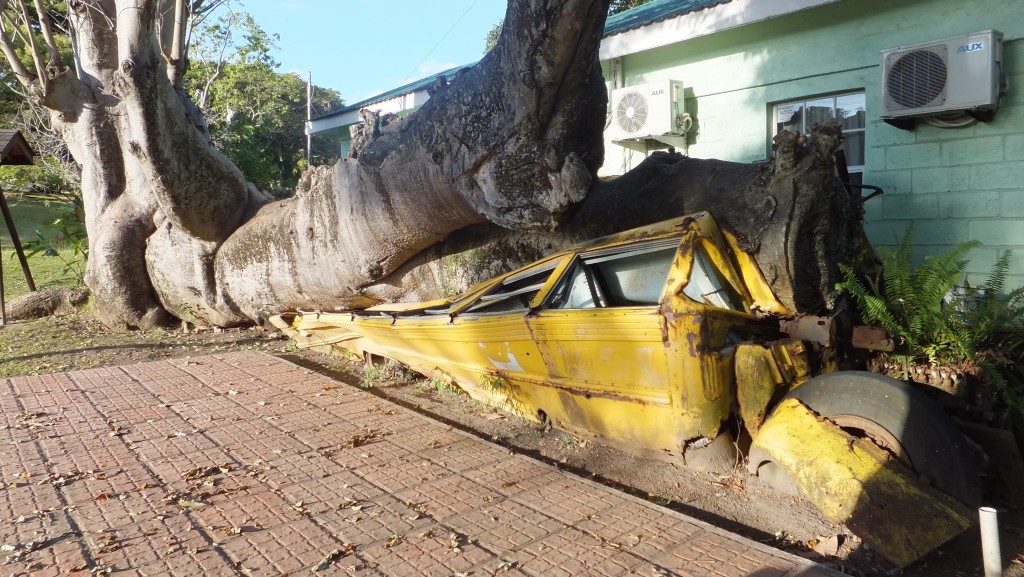
The crushed bus was about the most interesting thing in this botanical garden in Dominica. Like botanical gardens everywhere, this one faces challenges in staying relevant. This property was a nice enough park, but did not have the resources after the storm to replant.
Botanical gardens and home landscapes face the same difficulties today. If it is only a pretty landscape with few other benefits; will it be sustainable when “pretty” wears off? Personal landscapes, parks and botanical gardens all need to look to producing more benefits.
Lesson #2: Well designed tools work best
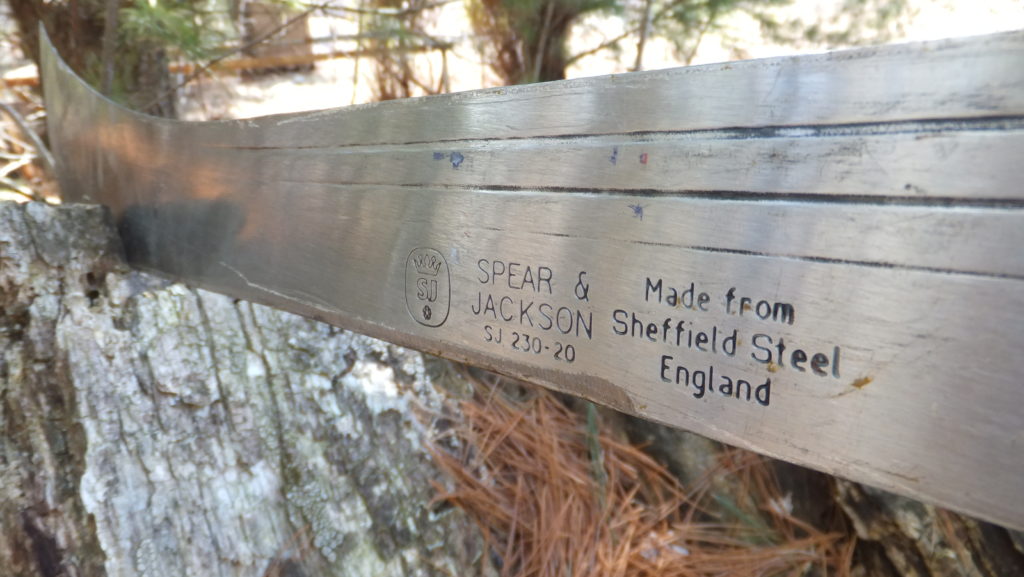
Machetes are as common as cellphones in Dominica. They refer to these as a cutlass. The cutlass is used for pruning, clearing, cutting herbs and yes butchering fish! It is interesting that there is actually some science and physics behind a good cutlass. Most of the ones I saw had broader, thicker blades near the tip to provide more striking power like an ax. Yes, I bought one while I was there for less than $10 and it works well.
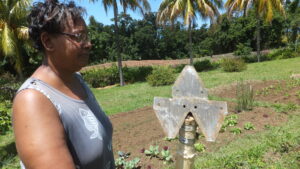
Simple tools work best in Dominica and they often work best at home too. We shared some scuffle hoes that we made in our shop and took with us to Dominica. Needles to say they were a hit. We made these hoes by welding sickle teeth together and adding a piece of angle iron to hold the handle. Locals cut us handles from hardwoods on-site
Like here, Dominica has weeds! And they grow 365 days a year! Scuffle hoes were new to the people we met, but they went right to work with them.It was interesting that people even chose the hoe they liked best based on their use and their personality!
You can use simple tools in your own landscape. Often, however, the tools being sold to gardeners are not all that great, not built well and may actually create more work than you need to do. Finding the right tools that work is tricky, so if you have questions about what might work for you-let me know.
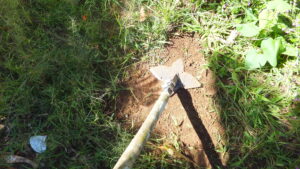
We’ll be producing more scuffle hoes so people across the globe can try them out. The intent is not to produce hundreds if them, but rather to show people how they can make there own with just a little scrap metal and a few minutes of welding.
If you want a hoe like this we’ll make one for you and your purchase will go to making and donating one to someone in need.
Lesson #3: Produce local/Buy local
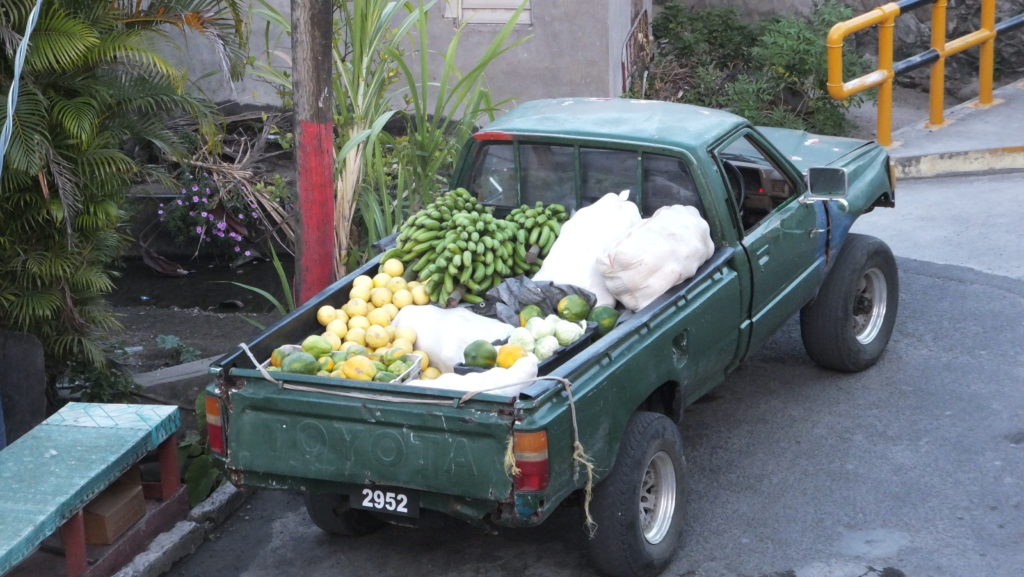
With transportation difficult and costly it makes sense in Dominica to be as self-sufficient as possible.
We had a local wood shop make us a cutting board from native wood. In the U.S. we often import wood for a variety of purposes when we have species that could be used instead. A large percentage of trees cut in Wisconsin are exported. This is okay, but it would be better if you could add more value to our forest products before we sell them.
In our climate and in our landscapes we can grow many tree varieties for a wealth of benefits.
When you are surrounded by water it makes sense to harvest fish and other products in a sustainable way. When you eat what you catch, food can go from water to table in only a few miles.
Wild caught animals, farm raised and wild fish, mushrooms, berries, nuts and craft materials are all things that can be harvested near where we live.
Chocolate isn’t just a guilty pleasure; it can be a sustainable crop. Cocoa is a perennial tree in Dominica that can be grown without pesticides.
In our own landscapes there are a variety of useful plants that you can grow depending on your needs.
You don’t need to live in a tropical climate to grow food right where you live. Transportation is getting more expensive everywhere. In Dominica, local produce is really from very close by. You can grow in small unused spaces just like they do in Dominica. It just takes a little planning and thought.
